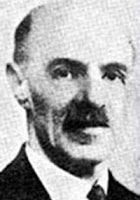What are the "Factors of Learning"?
There are
various factors that assist the process of learning among human beings. These factors
can be divided into the following categories:
Psychological
Factors:
These are
the most important factors in the process of learning. It includes the
following factors:
- Generalization: When an individual goes through many similar and comparable experiences, he/she discerns the common element among them. On this basis, he/she formulates a general rule that has considerable influence on his/her future conduct.
- Facilitation: It is an important factor in learning because it is human tendency to learn activities that are simple and interesting.
- Differentiation: An individual distinguishes between dissimilar objects or compares them in such a manner to bring dissimilarity.
- Inhibition: It is an obstructive psychological element or factor in learning. In this, some psychological elements provide obstruction in the learning process.
- Integration: It helps to improve one’s insight into the subjects already learnt.
Physiological
Factors:
Learning
is more a psycho-physiological process than a purely psychological one.
Following are the important physiological factors in learning:
· Fatigue: In a state of fatigue, the individual’s
capacity to learn is considerably reduced and all that is learnt is also easily
forgotten.
· Drugs and intoxicants: These are the obstacles
in the process of learning.
· Diseases: Disease, whether it is physical or
mental, obstructs learning as it reduces the capacity to grasp and learn.
· Excited Physical Condition: An excited bodily
state, arising out of emotion cause difficulty in learning.
· Difference in Age and Maturity: Before any
particular activity can be acquired, it is necessary to attain a particular
level of maturity that can only come at a particular age level.
Physical
Factors:
The physical
factors have also some importance in the learning process. For example, high
and low temperature, noise, and amount of humidity, all these conditions
influence the process of learning.
Social Factors:
Man is
a social animal and all his activities are influenced by the social conditions,
for example, imitation, suggestion, sympathy, praise, competition, and
cooperation. All these factors influence the learning process.
















